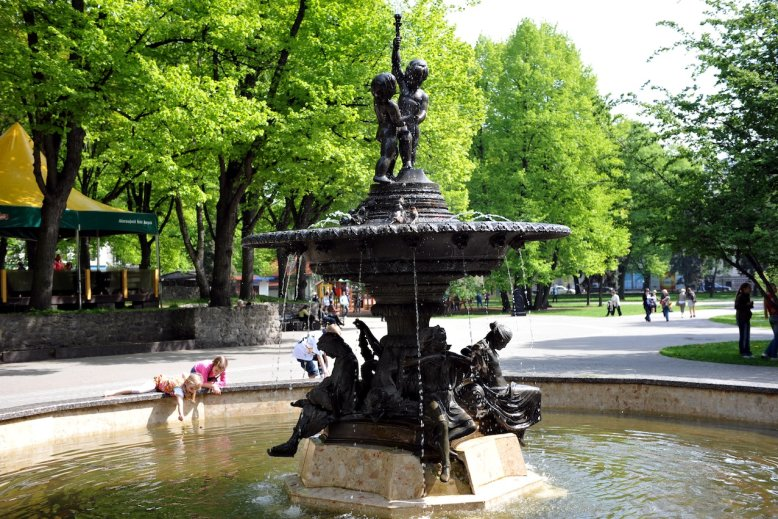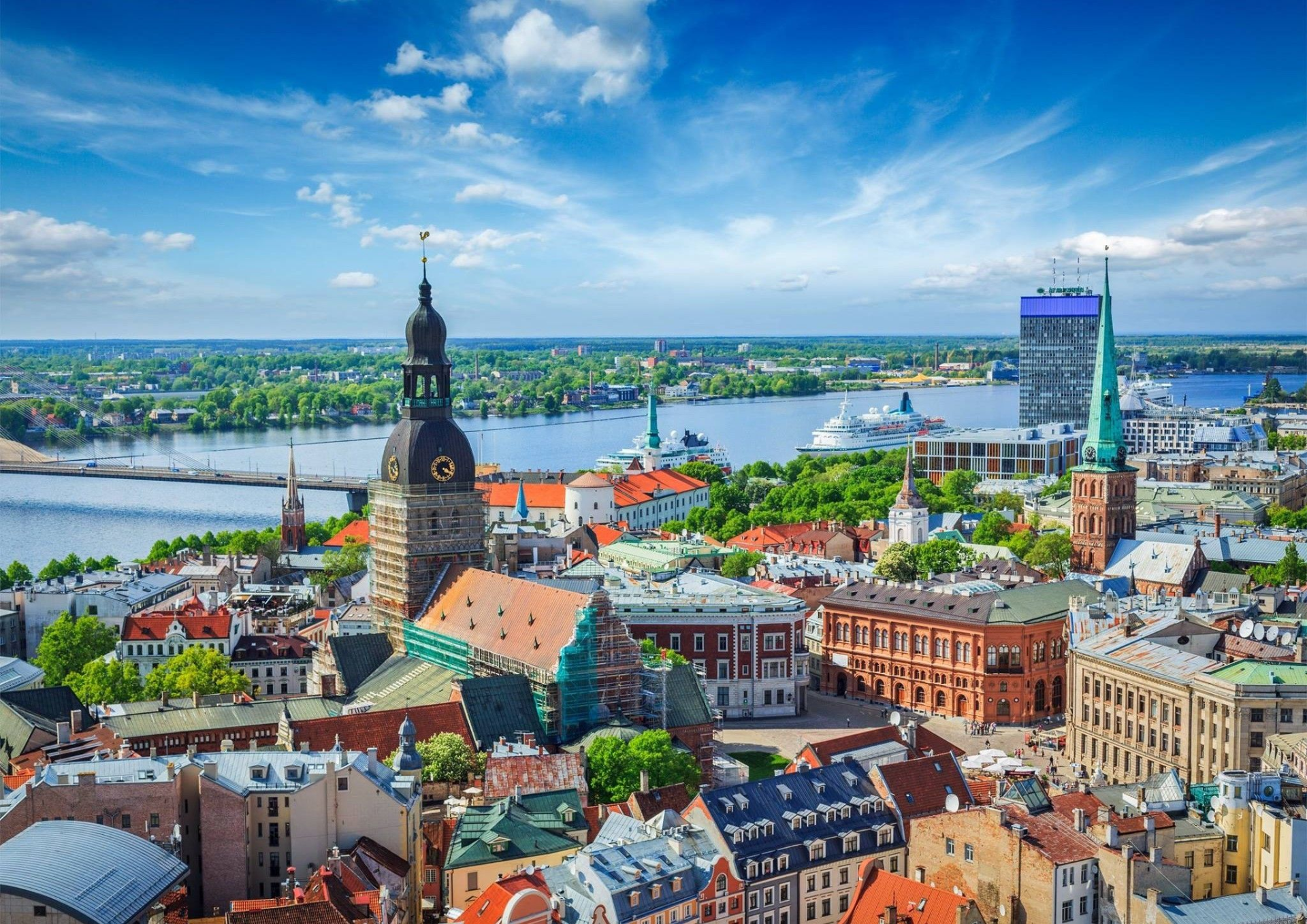LATVIA






Latvia, Latvian: Latvija, officially the Republic of Latvia (Latvian: Latvijas Republika), is a country
in the Baltic region of Northern Europe. Since its independence, Latvia has been referred to as one of the Baltic states. It is bordered by Estonia to the north, Lithuania to the south, Russia to the east, and Belarus to the southeast, and shares a maritime border with Sweden to the west. Latvia has 1,957,200 inhabitants and a territory of 64,589 km2 (24,938 sq mi). The country has a temperate seasonal climate.
If we are asked to show where the heart and soul of Latvia is, we would certainly mention our
capital city - Riga!
Riga was once the largest andmost developed city in Sweden. In 1621, Riga came under the rule of Gustavus Adolphus, the then King of Sweden. It remained under Swedish rule until 1710, when the city was besieged by Russian Tsar Peter the Great. This shift in power ended Sweden's rule of Northern Europe and marked the start of Russia's new dominance. But that did not stop the city from reaching one of the most prominent and high standards for modern society today. Roughly 40% of all Latvian inhabitants live in our capital city, we could add 10-15% more to that count because there are smaller cities, districts which live in the outskirts of Riga and handful of them are working inside the big city we know today. With this we can say that more than half of citizens of Latvia live in or around Riga. That is quite mind blowing and a beautiful economical and industrial sight to see. Riga has turned into some sort of agglomeration and that means small towns/villages merging under the names of districts in Riga.
One of the most important places that helped Riga grow in this cultural centre is the harbour and being beneficially close to the river of Daugava which goes out in to the Baltic sea. Once this river had deep connections with the vikings although they used it as a way to get more loot from places deeper into the territory. Once the river was an important as a strategically location called the "Amber Way" where the Nordic Vikings started their travels east. Today you can find in the very heart of the city, just at the doorsteps of the Old Town, the Sea Passenger Terminal. Riga is also a hub for both domestic and international trains. Only twenty minutes away from the city centre you find the biggest airport in the Baltic States, Riga International Airport. Big cruise ships venture out into the sea with people ready to have fun and party, trains bring new foreigners and people from different parts of Latvia to one place and for three reasons: to find new work opportunities, to meet new people and to view the Old Town of Riga.
The Old Town is the oldest section of Riga as well as the center of the city. It is the city's most popular area with tourists. In 1997, Riga's historic center was included in the UNESCO World Heritage List. The Old Town has highly diverse architecture, and the majority of buildings have the status of a cultural monument. The city's architecture represents various periods - Romanticism, Gothic, Baroque, Classicism, and Modernism. After the restoration of the
independence of Latvia, many buildings in the Old Town were reconstructed or rebuilt to restore the historic look of the area. Also a lot are still being reconstructed to maximise the thought, dream of Rigas Old Town being reborn once again with all its glory! The most impressive buildings in the Old Town are the Riga Cathedral and St. Peter's Church, offering a wonderful panoramic view on the city of Riga from a 72 meter observational tower. The Old Town's streets and squares have numerous restaurants and cafes for all tastes.
The picture above is The House of the Blackheads locating in the very heart of Old Riga. For nearly 700 years the House of the Blackheads has delighted and enchanted locals and visitors. It is among the most splendor buildings in Riga, home to the unique history of the legendary Brotherhood of the Black Heads and the city of Riga. Historically, the building's function was to promote business activities in the city - it was a place for gathering of traders and shippers for many centuries. The soul of the Black Heads house was its active and joyful "blackheads", who, as young and unmarried traders, were known for their temperament and enthusiasm for the organization of various celebrations and events. Their enthusiasm transformed this building into one of the main cultural venues in the city, which set the pulse of Riga's social scene. Also today, the building offers one of the most magnificent premises to organize events, concerts, celebratory dinners, receptions, conferences or other cultural events in the city. Visiting the House is a travel through its history, which reveals both its luxurious halls, historical cabinets and medieval cellars. You will see the largest-in-Baltics private silverware collection, crystal chandeliers, ceiling paintings at the Celebration hall, weapons, armor and much more.
Let us have a little insight on the park, Vērmanes Garden Park is Riga's second oldest public park; the numerous benches are always occupied by Rigans and visitors to the city, the historic open-air stage features various concerts, and children have fun in the park's playground. Vērmanes Garden Park is situated in the very centre of the city, surrounded by Tērbatas, Elizabetes, Krišjāņa Barona and Merķeļa streets. Riga's second oldest park was created by donations in early 19th century. It was named after the wealthy widow Anna Gertrud Vērmane (born Ebel, 1750.-1827), who had allocated a piece of land and a great sum of money for the park. Now a statue to the generous lady stands there. Vērmanes Garden Park features various sculptures - splendid four season fountain, majestic stone lions, a monument to the collector of Latvian folk songs - Krišjānis Barons, and a bronze dandy - a monument to Latvian artist and designer Kārlis Padegs - on the other side of
the fence. The garden park turns into a fairy tale during a year's darkest period as it features strings of beaming lamps, music, and giant snow-men. The wooden open-air stage on the Elizabetes Street side is popular with chess players; sometimes it holds concerts and performances of dance groups. Having strolled through the park, relax in the cosy tea house or a night club located in the historic building at the corner of Tērbatas and Merķeļa streets. Now the
renovated premises houses the music centre Vernisāža, established by Latvian composer Raimonds Pauls.
To summarize, Riga is one of the cultural, economical and industrial centres in the whole Europe and with every year it will only come closer to that number one spot! If UNESCO has put a lot of faith into our Old Riga then you should put faith in what you will see and enjoy, get carried away in the beautiful architecture and truly hearth-warming sights that gives satisfaction in the time spent there. See you there!
Limbazi Secondary School No 3 was founded in 1991 and is one of the few secondary schools in the neighbourhood. The school is currently employing 45 teachers, a speech therapist, psychologist, and 20 other supporting staff. There are 412 students currently studying in this school (aged 7 - 19). At the moment the school carries out four educational programs, i.e. elementary, special elementary for students with learning difficulties, general secondary education and professionally oriented secondary education program. Limbazi Secondary School No 3 is the only school in the region which has been adjusted to students with physical disabilities. It also provides a special program for students with learning and behavioural problems. These students are also going to be involved in the project. The school has been in a national Eco-School program since 2012.
One of the aims of the school is to educate the students, their parents and the community in efficient use of energy, consuming goods wisely and importance of recycling. Peer learning and practical activities are supported during lessons through various topics, such as climate change, forest renewals, resource saving and ZERO waste and the application of this concept also beyond the walls of the school on a local and international level as well.
Since the Limbazi Secondary School No 3 is an Eco School, one of the activities it actively participates in is recycling. Appropriate containers have been allocated for PET bottles, glass, paper, carton, and batteries and during lessons students are being encouraged to pay attention to sorting. In addition, students have been participating in regular paper collecting campaigns where
during the past few years the school has given away 3-4 tons of wastepaper. Teachers and students have also been actively partaking in planting trees in the local area for the past 7 years. Each year 4 to 6 thousand pine trees or spruces are planted which makes up about 1.5 to 2 hectares of forest. In 2014 the school came sixth in an international tree planting campaign 'ENO Treelympics'.
